Purchases may be made via a visit to our office, by telephone (317-232-2535), fax (317-232-3728), or e-mail (ihb@history.in.gov). More info on purchasing here.
The Indiana Historian is a magazine on varied topics in Indiana history, which demonstrates and encourages good research techniques and the use and proper documentation of a variety of primary sources. Photographs, illustrations, maps, and interesting documents enhance each issue. Activities are suggested to help the learning process and add resources for local and state history. Complimentary copies were sent to every educational institution, library, cultural, and historical organization in the state. Publication ceased in 2003; print copies and digital downloads are available. See below.
A single issue costs $1.00; 20 or more issues on any topics cost $.30 each (no additional discount on items with special pricing).
The Magazines are Arranged by Topic:
Indiana History Basics
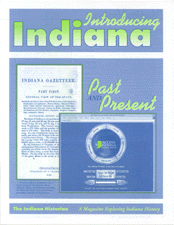
Information on Indiana's physical features, people, government, emblems, heritage, commerce, industry, and transportation--past and present.
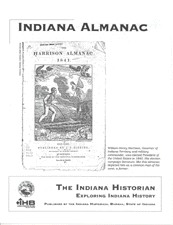
Events in Indiana history in almanac form.
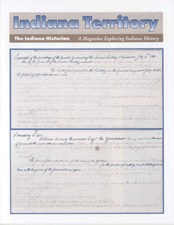
Documents the formation of Indiana from the Northwest Territory, through various stages as Indiana Territory. Includes discussions of finances and slavery. William Henry Harrison's life and career is highlighted in the timeline.
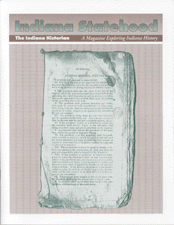
Provides details about the process, the people, and the times that led to Indiana's acceptance as the nineteenth state on December 11, 1816.
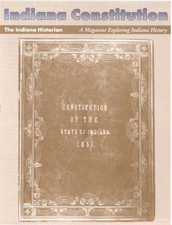
Describes the rewriting of the Constitution and why, the constitutional convention of 1851, its members, and the differences between the two Indiana Constitutions, women's rights, and African-American immigration.
Completes a set, with the two issues above, which provides a concise introduction to the early history and constitutional development of Indiana. Call for special set price.
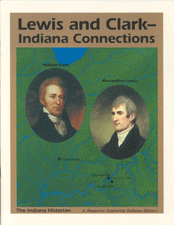
The state of Indiana has an important, recognized connection to the Lewis and Clark Expedition. That connection was reinforced with a National Signature Event in Clarksville in October 2003.
There is more to it than that, however. What many people forget is that until the party left its winter camp in May 1804, it remained in Indiana Territory, governed from Vincennes by William Henry Harrison. Harrison and Vincennes were an important juncture for contact between the party and President Thomas Jefferson.
Doing Local History
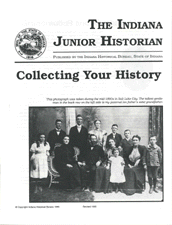
What can you learn about your family? What will you be able to tell your children and grandchildren?
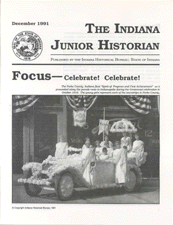
Celebrations are opportunities to collect the history of the past. Indiana did that as part of its centennial celebration. Contains a timeline of Indiana celebrations.
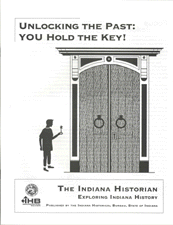
An introduction to research in local history with examples and checklist.
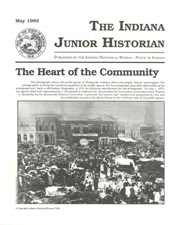
Public places--buildings, monuments, streets and roads, parks and open spaces--help to define a community. Shelbyville, Shelby County, is the example.
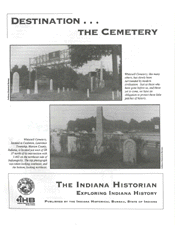
Cemeteries can be exciting resources for the study of local and cultural history--a historical resource.
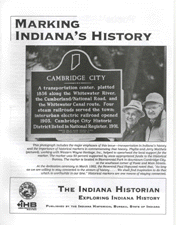
The history of Indiana's state historic markers, early accounts of travel, and a marker survey are included.
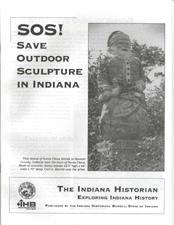
The theme of 1994 National Historic Preservation Week was Save Outdoor Sculpture! Details statewide survey of outdoor sculpture.
People and the Land
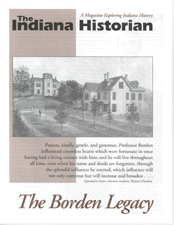
William W. Borden, Indiana philanthropist of New Providence, whose educational goals and scientific collections have preserved his memory.
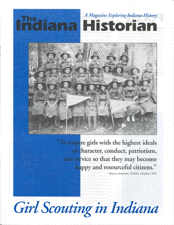
On the eighty-fifth anniversary of the Girl Scouts; focuses on the importance of studying and documenting youth organizations.
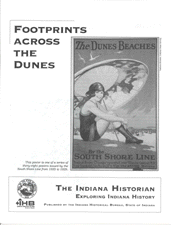
The geography, geology, and natural history of the dunes along Indiana's Lake Michigan shore; effect on state's development and public policy.

Public places--buildings, monuments, streets and roads, parks and open spaces--help to define a community. Shelbyville, Shelby County, is the example.
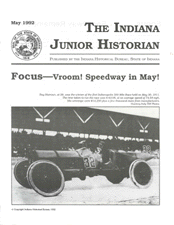
The Indianapolis 500 Mile Race, including history and a 1910 map of Speedway, Indiana.

Radio and its impact on Indiana.
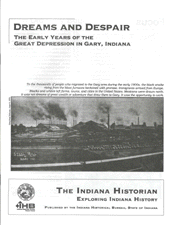
The experiences of Gary, Indiana during the early years of the Great Depression.
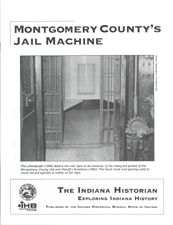
History of the rotary jail in Crawfordsville; timeline of jails and treatment of prisoners.
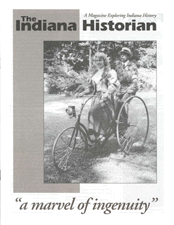
The phenomenon of the bicycle when it was a short-lived "craze" in the 1890s, as well as its economic and social impact.
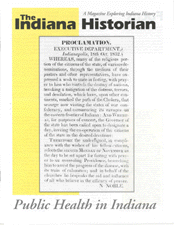
Public health science in Indiana at the turn of the twentieth century, Dr. John N. Hurty and the Indiana State Board of Health, and Dr. Harvey Washington Wiley and the first federal Pure Food and Drugs Act in 1906.
American Indians and Prehistory

What was Indiana like millions of years ago? The fossils at the Falls of the Ohio are a good record.
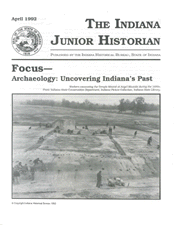
Angel Mounds was a settlement of people in the Mississippian period. Describes life at Angel Mounds using archaeological clues.
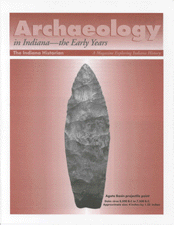
Basic definitions; activities in Indiana to 1966; Indiana law; what an archaeologist does.

Summarizes Indiana activity since 1966; charts Indiana cultural chronology; describes phases of archaeological research.
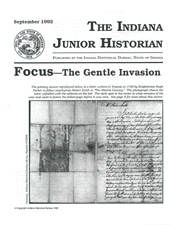
Interaction of Native American tribes with Europeans who claimed the land that is now Indiana. Focuses on French; includes a timeline 1492 to 1763.
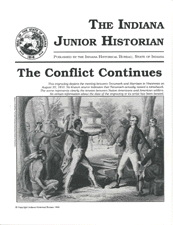
British interactions with Native Americans; includes timeline.
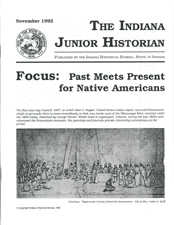
Focuses on statehood; Indian lands; Trail of Death; 1992 events and population.
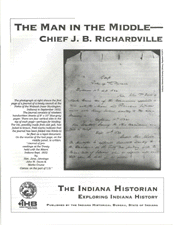
Principal chief of Miami tribe in mid-1800s; negotiated with U.S. at Forks of the Wabash in 1832. Contains journal of the meetings.

Stories of Woodland people based on a 2001 original play to heighten awareness about Indiana's American Indian connections -- past, present, and future.
African-American History
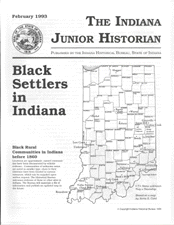
Black Settlers in Indiana
Focuses on settlements of free blacks; emphasis on the Roberts Settlement in early Hamilton County in central Indiana.
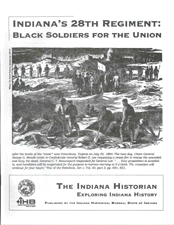
Indiana's 28th Regiment: Black Soldiers for the Union
This was the only black regiment organized in Indiana. Regimental Chaplain Garland H. White's letters to the Christian Recorder provided eyewitness accounts of the service of the 28th.
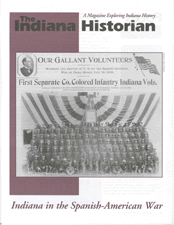
The home front experience, Indiana volunteers, and the dilemma of black citizens and soldiers.
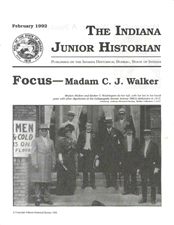
Madam C. J. Walker, Part 1
Describe the life and career of Madam Walker, a prominent black business woman in Indianapolis in the early 1900s.
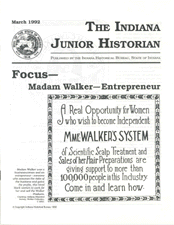
Madam Walker-Entrepreneur, Part 2
These two magazines describe the life and career of Madam Walker, a prominent black business woman in Indianapolis in the early 1900s.
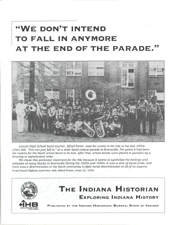
"We don't intend to fall in anymore ...."
A history of blacks in Evansville from settlement to the 1940s.
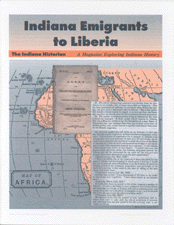
Explores black colonization and Indiana's part in the nationwide movement in the nineteenth century.
Women's History

Madam C. J. Walker, Part 1
Describe the life and career of Madam Walker, a prominent black business woman in Indianapolis in the early 1900s.

Madam Walker-Entrepreneur, Part 2
These two magazines describe the life and career of Madam Walker, a prominent black business woman in Indianapolis in the early 1900s.
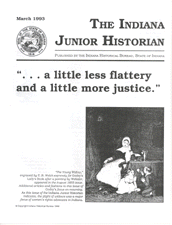
Married women's property rights and woman suffrage in nineteenth-century Indiana.
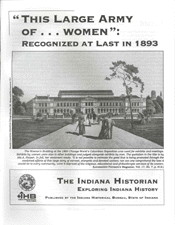
"This Large Army of . . . women"
Women of Indiana and the 1893 World's Columbian Exposition held in Chicago. Details Indiana women's interests, organizations, and achievements.
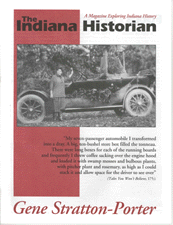
Porter was a self-trained writer, naturalist, and photographer. Two state historic sites memorialize her life and accomplishments.

On the eighty-fifth anniversary of the Girl Scouts; focuses on the importance of studying and documenting youth organizations.
Literary and Cultural

Porter was a self-trained writer, naturalist, and photographer. Two state historic sites memorialize her life and accomplishments.

James Whitcomb Riley, the Hoosier poet and a superstar of his time!
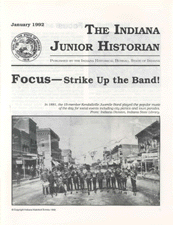
Strike Up the Band!
Band music was everywhere in the later part of the nineteenth century; many military, town, social, ethnic, and commercial organizations formed bands.
Transportation and Commerce
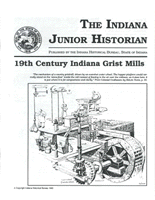
Nineteenth Century Indiana Grist Mills
Brief history of grist mills: how they work; who works them; and locations in 1860.

Band music was everywhere in the later part of the nineteenth century; many military, town, social, ethnic, and commercial organizations formed bands.

Madam C. J. Walker, Part 1
Describe the life and career of Madam Walker, a prominent black business woman in Indianapolis in the early 1900s.

Madam Walker-Entrepreneur, Part 2
These two magazines describe the life and career of Madam Walker, a prominent black business woman in Indianapolis in the early 1900s.

The Indianapolis 500 Mile Race, including history and a 1910 map of Speedway, Indiana.

Researching Radio in Indiana
Radio and its impact on Indiana.
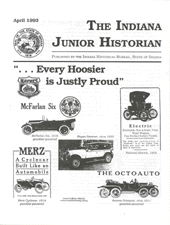
". . . Every Hoosier is Justly Proud"
Indiana's rich and interesting automobile heritage.
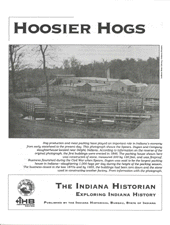
Hoosier Hogs
Origins of the hog economy in Indiana; pig history timeline.
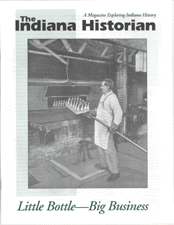
Little Bottle--Big Business
Early history of the soft drink industry, the Root Glass Company, Terre Haute, and the Coca-Cola bottle it designed.

The phenomenon of the bicycle when it was a short-lived "craze" in the 1890s, as well as its economic and social impact.
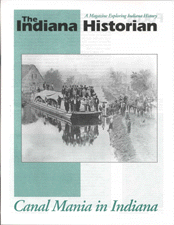
The development and impact of the Whitewater Canal on southeastern Indiana.
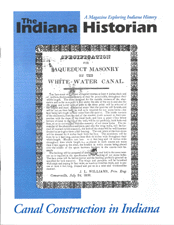
How canal building progressed and affected individuals.
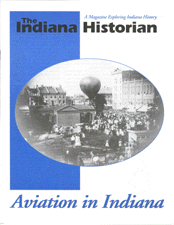
Many "firsts" of aviation in Indiana, people and communities involved over the years--from the first airmail in 1859 through Hoosier astronaut David Wolf's stay on the Russian space station Mir.
Government and Politics
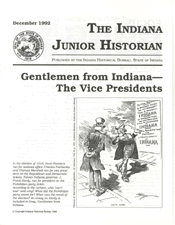
Gentlemen from Indiana--The Vice Presidents
Introduces Indiana's five vice presidents and describes a "swing state."

Documents the formation of Indiana from the Northwest Territory, through various stages as Indiana Territory. Includes discussions of finances and slavery. William Henry Harrison's life and career is highlighted in the timeline.

Provides details about the process, the people, and the times that led to Indiana's acceptance as the nineteenth state on December 11, 1816.

Describes the rewriting of the Constitution and why, the constitutional convention of 1851, its members, and the differences between the two Indiana Constitutions, women's rights, and African-American immigration.
Completes a set, with the two issues above, which provides a concise introduction to the early history and constitutional development of Indiana. Call for special set price.
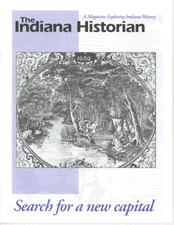
How Indianapolis came to be the capital; Indiana's past capitals; the commission which chose the location.
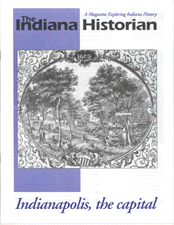
The beginnings of Indianapolis and Marion County through the arrival of state government in the fall of 1824.

"...a little less flattery a little more justice."
Married women's property rights and woman suffrage in nineteenth-century Indiana.

Public health science in Indiana at the turn of the twentieth century, Dr. John N. Hurty and the Indiana State Board of Health, and Dr. Harvey Washington Wiley and the first federal Pure Food and Drugs Act in 1906.
Conflicts

Hoosier hero George Rogers Clark's Memoir provides the basis of the story of the defeat of British troops at Fort Sackville, Vincennes by Clark and his men in February 1779. The full text of the Memoir is on the Historical Bureau Web site.

This was the only black regiment organized in Indiana. Regimental Chaplain Garland H. White's letters to the Christian Recorder provided eyewitness accounts of the service of the 28th.

The home front experience, Indiana volunteers, and the dilemma of black citizens and soldiers.








































































